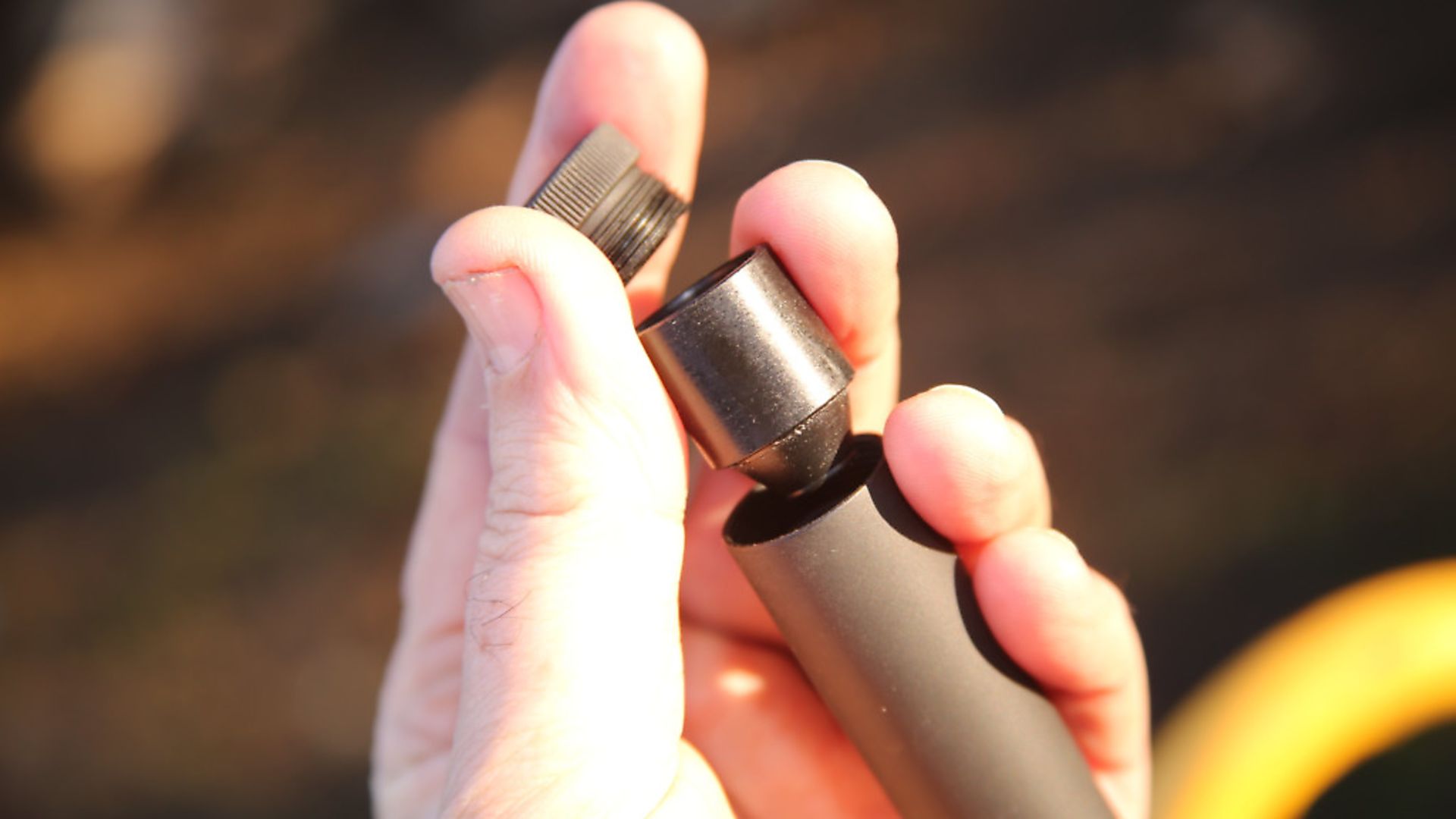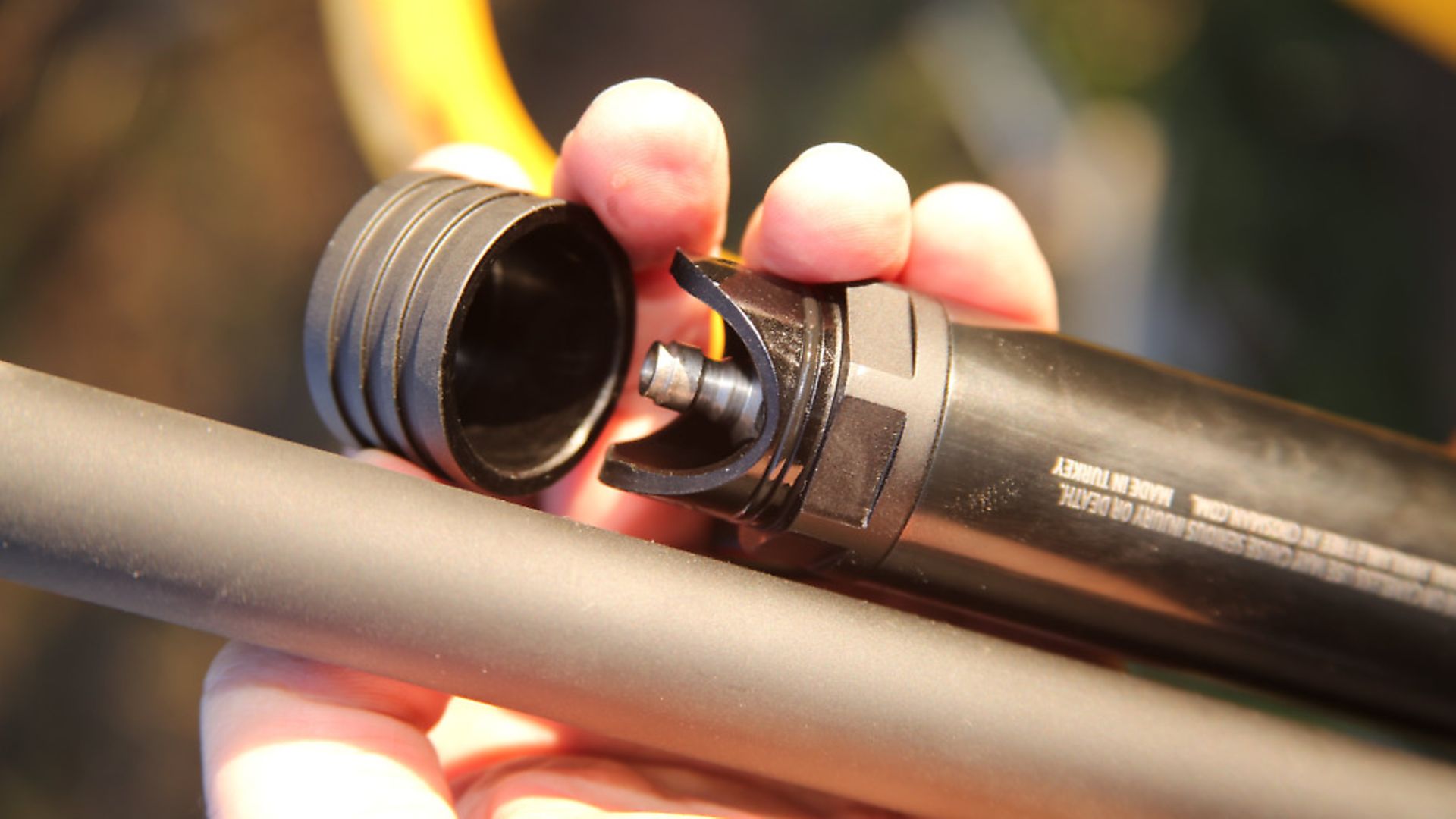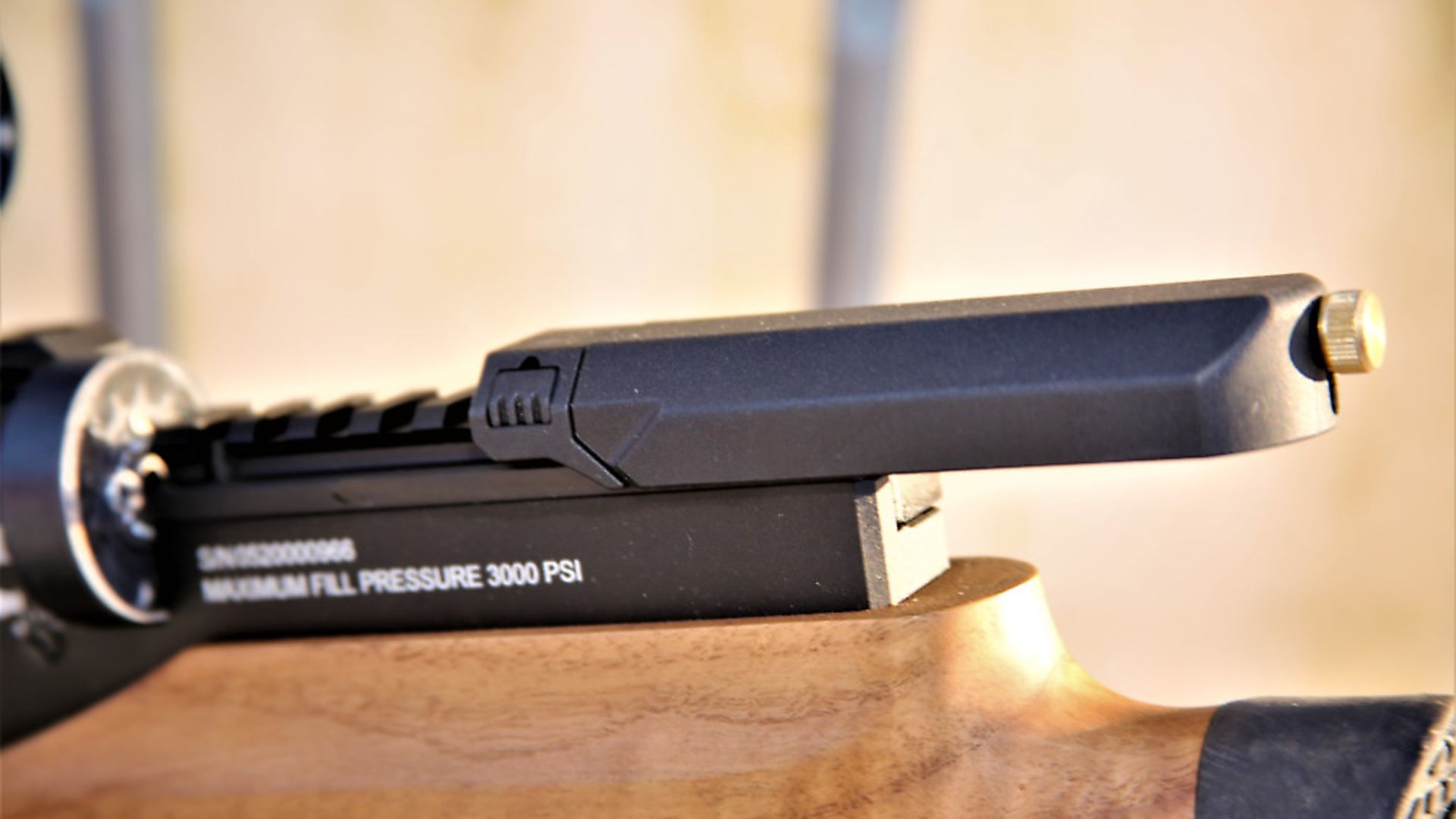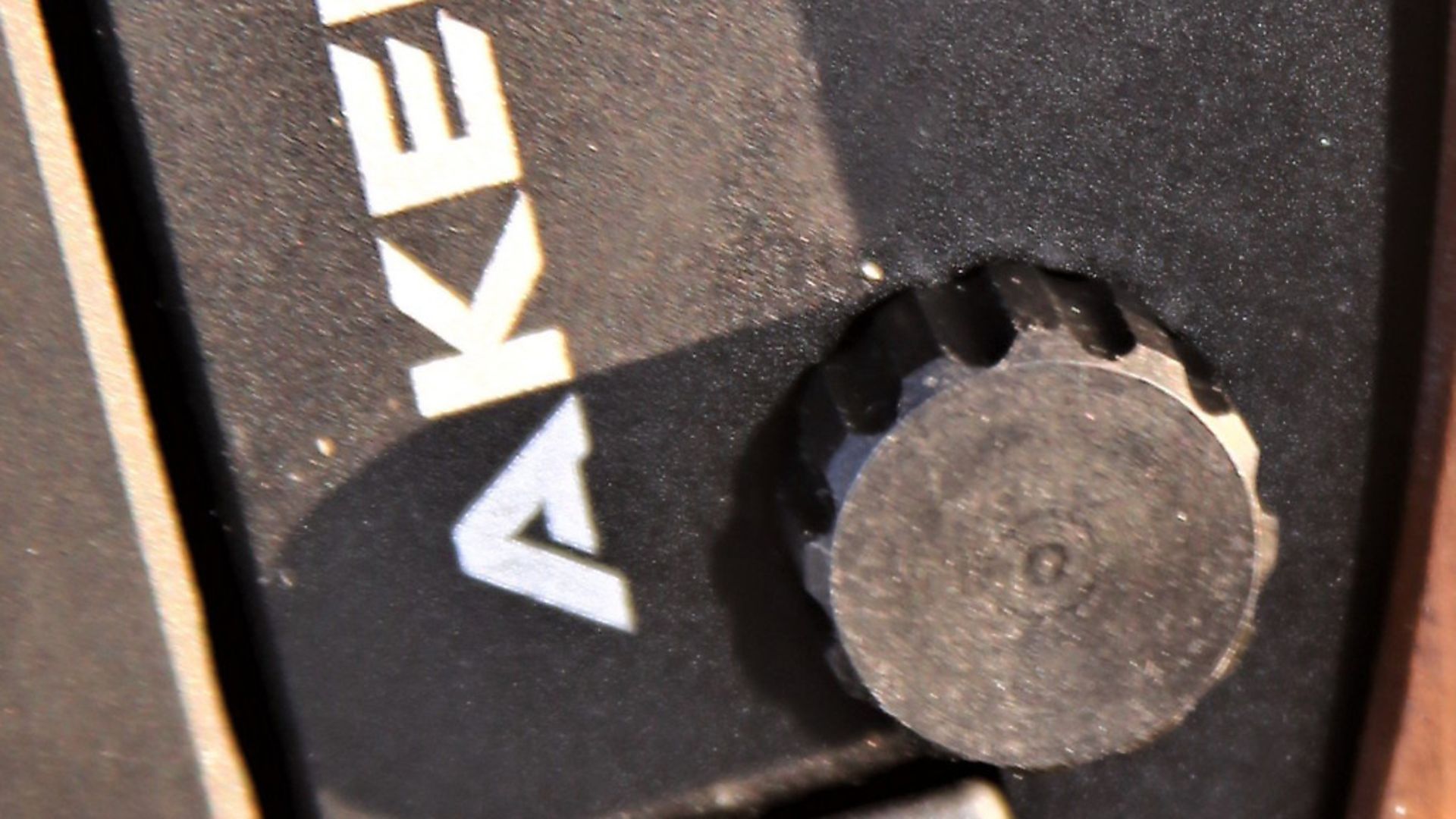The Benjamin Akela joins the bullpup ranks – but where does it sit in that multi-model market? Terry Doe finds out in this test & review
 credit: Archant
credit: Archant
The Benjamin brand is part of the giant U.S. Crosman Corporation, and if the folks in charge decide that it’s time it had a best-selling bullpup in its ranks, the resources are there to deliver one. That’s what they’ve done with the Benjamin Akela, which made its Stateside debut back in the early autumn of last year. My American contacts seemed to be enthusiastic about the new Benjamin bullpup, and when Crosman’s U.K. importers, Range Right, called me to say an Akela was on its way to me, that news certainly went quite a way toward lifting the lockdown gloom.
The delivery chap kept a Covid-respectful distance as he propped the bullpup-sized parcel against my porch, and after nodding my thanks, I advanced on the double-wrapped box with a germicidal spray in one hand, some antiseptic wipes in the other, and a mask on my face. Two minutes of squirt-rubbing later, and I was ready to take the non-potentially-lethal box into the man cave and open it. Over 40 minutes later, it was only when my glasses began to steam up, that I realised I still had my mask on, such is the new normality of wearing one. I suspect my excitement at exploring a new rifle had something to do with the steam-up, and it didn’t take me long to see that there’s plenty get excited about with the Akela.
 credit: Archant
credit: Archant
TO THE U.S. VIA TURKEY
For some reason, I abandoned all male convention and began my exploration of the Akela by reading the owners’s manual. At the bottom of the title page it clearly states that the rifle is made in Turkey, which given the popularity of Turkish PCPs these days, is no bad thing. I recall saying out loud, ‘well, that explains the Turkish walnut stock, then’, and nodding to myself in agreement. Frankly, the end of this lockdown can’t come a day too soon.
 credit: Archant
credit: Archant
FEATURES RUNDOWN
The traditional arms’ length visual evaluation reveals an attractive, sidelever-actioned, multi-shot, unregulated, .22 calibre, pre-charged pneumatic sporter, with a fully-shrouded barrel, an ambidextrous, thumbhole stock, and extended Picatinny scope mounting rail, a micro-adjustable cheek piece, and a distinctly target-style, adjustable trigger shoe. Add a power-adjust wheel, a couple of 12-shot, removable, rotary magazines, a stubby, manual, resettable safety-catch, a pair of fitted sling swivel studs, a solid rubber butt pad, and some seals, hex wrenches, a section of accessory rail and a push-fit charging connector, and you’ve got yourself 650 quid’s worth of Benjamin Akela.
 credit: Archant
credit: Archant
UP-CLOSE AND PERSONAL
Zooming in with the jeweller’s eyepiece installed by doing this airgun review thing for over 30 years, I’m still undecided about where the Akela is intended to sit in the modern PCP marketplace. I’m not entirely sure why needing to know that bothers me, but in these intense times, I guess I prefer the order and clarity that comes with knowing what a rifle is supposed to be, before I find out if it’s met its brief. Whatever it is, it was an itch I needed to scratch, so I had one more go before I let the pure mechanics of this test dictate to me.
 credit: Archant
credit: Archant
MORE THAN THE MONEY
First, that RRP of £650 speaks of mid-range contention, rather than budget-friendly attraction, or full-on supergun indulgence. Actually, that price tag inclines the Akela slightly more toward the ‘highly affordable’, than the eye-wateringly expensive, but my close inspection puts the standard of the rifle’s fit and finish a pleasing degree above its asking price.
The matte finish of the metalwork, save for the low gloss of the rifle’s air reservoir, is pretty much flawless, with no sign of corner-cutting in terms of how each component is presented or fixed to its neighbour. The oil-finished walnut is expertly stippled at the scalloped grip, and there’s even a large ‘B’ perfectly pecked into the underside of the butt. Each line, curve and cut-out flows about its business, and if this stock were fitted to a rifle costing twice as much, it wouldn’t be out of place. In fact, the more I look at it, the more this stock reminds me of one that actually is fitted to a rifle costing twice as much. A little ‘cross-pollination’ of design, perhaps.
 credit: Archant
credit: Archant
RAILING AGIN’ IT
Having decided that the test rifle is pitched toward those who want more bang for their buck, I decided it was time to bolt on a scope and see how the Akela performed, so the first job was to get that scope position just right. Here’s where I make a statement that I might have made before, but when did that ever stop me? I don’t like Picatinny/Weaver scope rails on PCP airguns. Shock-horror-probe, I find myself snarling at the all-conquering, super-solid mounting system that is taking over our world.
I don’t like Picatinny rails because they are inelegant in their lumpen, railroad track blockishness, and because they are simply not required on a PCP. Also, I can’t slide my scope back and forth in millimetre-perfect increments to achieve perfect eye-scope alignment. Instead, I have to lift off the scope, shunt it along a slot or two, then re-clamp it to see it I have it set correctly. Sorry, not sorry, as the kids say, I’m not a fan of the Picatinny scope rail.
 credit: Archant
credit: Archant
PREPARED TO PERFORM
Setting up the Benjamin Akela is aided by its neat little moulded synthetic adjustable cheek piece, which slides back and forth at the squeeze of a release catch. A precious few millimetres of vertical adjustment is also available, courtesy of a knurled brass locking nut at the rear of the cheek piece. The whole thing sits on another section of Picatinny rail, and should the Akela owner decide that something more elaborate is required, it could be fabricated and fixed without too much hassle, by someone with the required skills, of course. As it was, I took my sweet time to get a Konuspro Evo 3-12 x 50 scope fixed and functioning, before turning my gathering interest toward the Akela’s magazine system.
 credit: Archant
credit: Archant
LOCK AND LOAD
Loading the magazines is fully covered with images and instructions in the manual, and follows the familiar method of pre-tensioning the magazine’s internal drive-spring by rotating the outer cover, locking it in place by inserting the first pellet, then rotating the cover back to its starting point, dropping pellet, nose first, into the loading ports as they present. I’ve used this type of mag’ for years, and loading 12 pellets into one can be done in under a minute, without rushing.
To insert the loaded magazine, it’s a simple matter of applying the manual safety-catch, fully drawing back the rifle’s sidelever, sliding the mag‘ into the slot on the right-hand side of the action – with the clear magazine cover facing you – then closing the sidelever. Push forward the safety-catch, and the Akela is ready to shoot. All standard fare, really, and apart from having a ‘stiff’ safety-catch, there’s nothing to criticise and much to praise about the Akela‘s essential functions. Again, this bullpup operates above its pay grade.
 credit: Archant
credit: Archant
HANDLING AND TRIGGER FUNCTION
Oddly, there are no instructions regarding how to adjust the mechanical function of the Akela’s trigger. Adjusting the trigger shoe is covered, but not a word or a diagram on how to tweak trigger performance itself. This is doubly odd, because it’s quite straightforward, albeit requiring the removal of the stock, and the trigger shoe, to get this simple job done.
This puts me in a tricky position, because I don’t want to tell you how to do something that might jeopardise your warranty. The thing is, this rifle definitely deserves a perfectly-adjusted, perfectly excellent trigger, and it can have one in a very few minutes, provided it’s done carefully and gradually. Blimey – have you ever wished you hadn’t started something?
Due to lockdown restrictions, plus the usual weather annoyances, my testing time is more precious than ever, and as I write this, I’m scarily close to my publishing deadline, but if I can get a statement from Range Right about adjusting the Akela’s trigger, I’ll add it at the end of this test. If I can’t do that, check with your supplier. Right, let’s move along, shall we?
OVER THE CHRONO
According to the Akela’s manual, the maximum charging pressure is 3000 psi, but as I suspected, that turned out to be too high to begin shooting inside the rifle’s ‘sweet spot‘. By this I mean having the first 50 shots leaving the muzzle with the least variation between them. On the .22 calibre test rifle, 2700 psi gave me those 50 sweetest shots, averaging 572 f.p.s. with Daystate Rangemaster pellets. The average variation was 16 f.p.s. over those first 50 shots, which stabilised at a slightly lower 14 f.p.s. after my fourth test session.
Each charge produced 75 ‘usable’ shots, capable of hitting a 20mm diameter target at 45 yards, which is around 10 yards further than most sub-12 hunting rifles need in the field. Now for some impressive grouping reports.
BENCH REST ACCURACY
On one breathless afternoon, with snow on the ground and a chill still very much in the air, I produced a series of groups from a makeshift bench that would have endorsed any PCP supergun on the market. My sheltered range extended to ‘only’ 40 yards, but the Akela and I were on top form and group after group had me talking to myself again, and this time the self-praise was nothing short of shameful. They were some seriously impressive groups, though, with the best three all 18mm diameter at the full 40 yards, centre-to-centre. A couple of the 30-yard examples were 15mm jobs, with only one annoying flier throughout the whole session. Conditions were ideal, but the Akela still had to do the business, and it certainly did. I must still stop talking to myself, though.
INITIAL VERDICT
The Benjamin Akela does, indeed, shoot well above its price tag, and with more range time, I’ll find out exactly how far above £650 it can go. For now, I’ll have a quick moan about the butt pad not being adjustable, the on-board pressure gauge being a bit sticky-out for my liking, and the front sling swivel stud being ‘noticeable’ under my leading hand, but let’s finish with a fanfare of positive notes.
The baffles in the barrel shroud do a surprisingly efficient job of stifling muzzle blast, and I’d be in no rush to fit a silencer, unless Range Right’s resident genius, Dave the gunsmith, comes up with one. Dave is a huge feature of all Range Right PCPs, because he personally hand fettles each and every one of them. Dave is one of a select band of priceless people I’ve met over the years who is every bit as tragically keen on airguns as I am. The Dave factor is an Akela feature that should be fully appreciated, believe me.
Finally, cocking and loading is smooth, easy and positive, and those magazines work exactly as they should. Above all, the Akela is an expertly made bullpup and I’m sure Benjamin, and the mighty Crosman Corporation, must be extremely pleased with it. I know I am, and so is Dave.
Next month, it’s all about refining the performance, and you never know, I may be able to show you how to tweak that trigger. Don’t forget to pick up your April issue!
RIFLE TECHNICAL SPECIFICATION
Model: Akela
Manufacturer: Benjamin/Crosman Corp.
Country of origin: Turkey
Price: £650
Type: Right-hand, pre-charged, multi-shot, bullpup sporter
Calibre: .22 only at present
Cocking/loading: Sidelever
Trigger: 2-stage, adjustable, with manual, resettable safety
Stock type: Ambidextrous, walnut thumbhole
Weight: 3,5 kg (7.7 lbs) Rifle only
Length: 838 mm (33 ins)
Barrel: 482 mm (19 ins)
Max fill pressure: 3000 psi (2700 psi recommended)
Shots per charge: 75-plus in .22 at sub-12 ft.lbs.
Average energy: 11.5 ft.lbs.
Contact: All Range Right dealers
www.range-right.co.uk